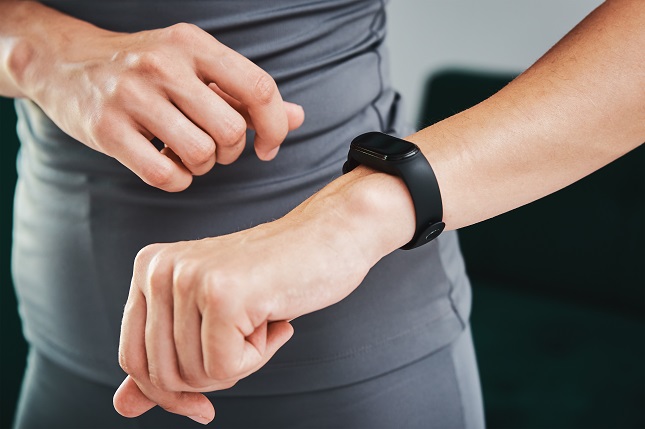Technology is advancing at a pace that often feels hard to keep up with, but every now and then, a development comes along that is not only innovative but also incredibly practical. Smart NFC wearables fall into this category. From fitness bands that double as digital wallets to rings that hold your contact information, these tiny devices pack a powerful punch when it comes to convenience and connectivity.
For beginners, though, the world of smart wearables powered by NFC (Near Field Communication) can feel overwhelming. What are they? How do they work? And more importantly, how can you start using them in your daily life?
Let’s check out how these devices fit into modern lifestyles, and help you choose the right path as you explore this technology.
What Are Smart NFC Wearables?
At their core, smart NFC wearables are everyday accessories embedded with NFC chips that allow them to communicate wirelessly with compatible devices. NFC is a short-range communication technology that enables data transfer when two devices are brought within a few centimeters of each other.
This might sound technical, but you’ve probably already used it without realizing it. Contactless payments at stores, keycards that unlock hotel rooms, and tap-to-share features on smartphones are all powered by NFC. Now, imagine having that same convenience built into a ring, bracelet, or even a fitness band. That’s the promise of smart NFC wearables—turning ordinary accessories into multi-functional tools.
Why They’re Gaining Popularity
Smart NFC wearables have grown beyond being a tech novelty. Their popularity stems from their ability to integrate seamlessly into daily routines. Instead of reaching for a wallet, phone, or ID card, wearers can simply tap their accessory to complete a task.
For example, they can:
- Make contactless payments while jogging, shopping, or commuting.
- Store digital business cards to share contact details with a quick tap.
- Replace physical access cards to open doors at offices or gyms.
- Pair with smart devices at home for easy automation.
This fusion of fashion and functionality is driving adoption. They don’t just look sleek—they simplify life in meaningful ways.
Getting Started with Smart NFC Wearables
If you’re curious about joining this growing trend, here’s how to begin your journey with NFC-powered accessories.
Understand Your Needs
Not every wearable is designed for the same purpose. Some are optimized for payments, others for access control, and some offer multi-functional capabilities. Start by thinking about where you would benefit most from the technology. Do you want a wearable to replace your gym keycard? Or do you need something that makes daily payments faster? Identifying your priorities will help narrow your choices.
Explore Different Styles
The beauty of this technology is that it comes in a variety of forms. Rings, bracelets, keychains, and even watches can carry NFC chips. If you want something subtle, a slim band might work. For those who love jewelry, a ring is both stylish and functional. The key is to find something that matches your personal style while serving a practical role.
Compatibility Matters
Before purchasing, check whether your wearable is compatible with the devices and systems you already use. For instance, not all NFC payment-enabled wearables work with every bank or card provider. Similarly, access control wearables may require specific system support. A little research upfront ensures a smoother experience later.
Everyday Applications That Transform Routines
The practical benefits of smart NFC wearables really come to life in day-to-day use. Imagine heading out for a run with nothing but your house key and your NFC-enabled ring. Along the way, you stop for a drink and simply tap your ring at the checkout. Later, at work, you breeze through the office doors without fumbling for an access card.
Beyond convenience, these devices can enhance security as well. With encrypted chips, NFC technology ensures that sensitive information is protected. Unlike magnetic cards or paper tickets, they are less prone to wear, loss, or duplication.
For many beginners, experimenting with small tasks first—like sharing a digital contact card—helps build confidence before using NFC wearables for payments or access control.
Tips for a Smooth Start
Like any new technology, adopting NFC wearables can involve a learning curve. Here are a few tips to make the transition easier:
- Start simple: Choose one application to begin with, such as contact sharing or unlocking a smart door.
- Stay secure: Always use wearables from trusted providers, especially if they involve payments or personal data.
- Keep backups: While convenient, NFC wearables shouldn’t fully replace essentials like your phone or wallet until you’re confident in their reliability.
- Experiment gradually: Try different scenarios—at the gym, while traveling, or during social events—to understand the full range of possibilities.
Looking Ahead
As more industries embrace NFC technology, the applications for wearables will only expand. Already, event organizers are using them for ticketing, while healthcare providers are exploring medical ID wearables that store emergency information. The rise of smart homes and the Internet of Things (IoT) will further increase their relevance, making them indispensable for digital lifestyles.
For those ready to take the first step, exploring options such as NFC wearables provides a gateway into this innovative space. Whether for convenience, security, or simply to stay ahead of the curve, embracing these tools is an investment in a more connected future.
Conclusion
Smart NFC wearables represent the perfect blend of style and function. They’re not about flashy gimmicks; they’re about solving everyday challenges with elegance and efficiency. For beginners, the path forward is simple: understand your needs, choose a device that fits your lifestyle, and start experimenting with the small conveniences that NFC technology offers.
As the world becomes increasingly digital, these wearables act as a bridge between physical life and virtual systems, offering control and freedom at the tap of a finger. Stepping into this space today means positioning yourself to enjoy the convenience, security, and sophistication that will define tomorrow’s connected world.








































